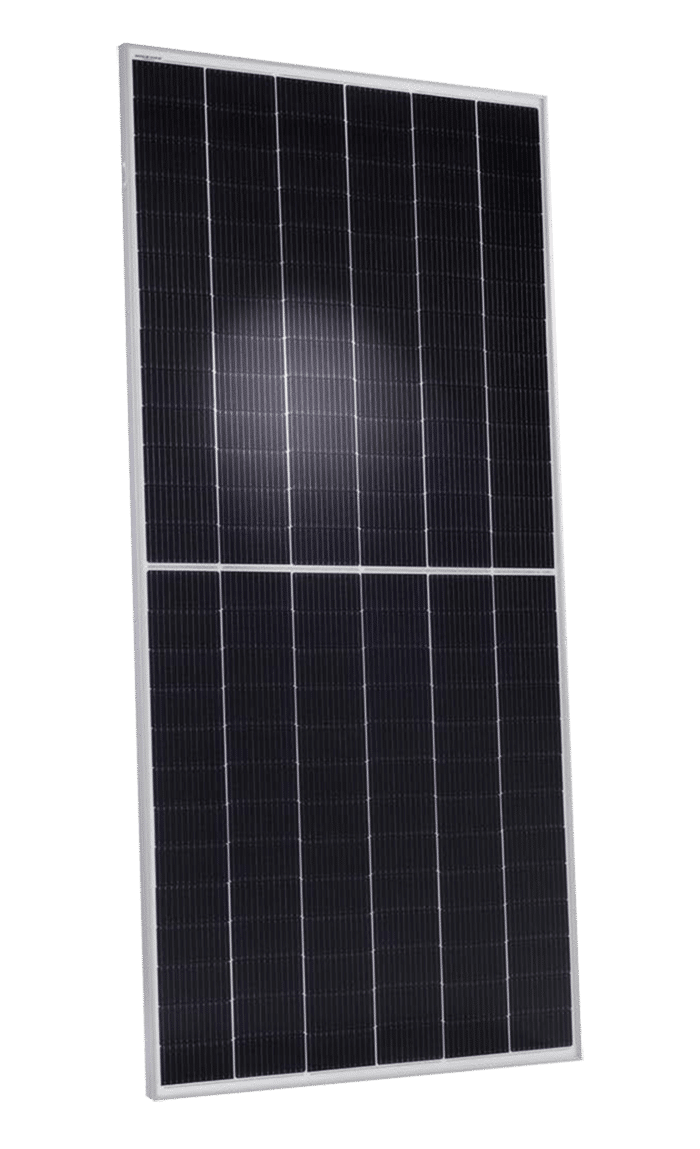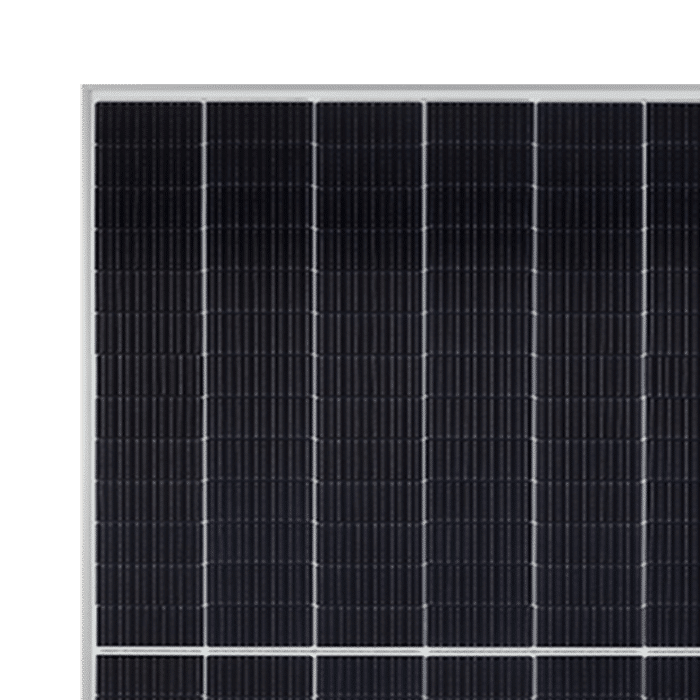Solar Panel QCELL
Solar Power




Solar Panel QCELL
Solar Power
595 W
Capacity12 Year Warranty
Thanks to improved power output, excellent reliability and high operational safety, the QCELL Solar Panel produces electricity at low cost and is suitable for a wide range of applications.
- Breaking the 21% efficiency barrier
- Low electricity generation costs
- Rated for extreme weather conditions
- Enduring high performance
- Reliable investment
- State-of-the-art module technology
- Industronic monitoring
Guaranteed Solar Power

Breaking the 21% barrier
Q.ANTUM technology makes efficient use of captured light to improve the LCOE (standardised cost of energy).

Low Electricity generation costs
More dynamic module and better LCOE, thanks to Q.ANTUM DUO technology.

Enduring High Performance
Long-term performance security with Anti LID and Anti PID2 technology, Hot-Spot Protect.

Extreme weather Rating
Panel frame made of high-tech aluminium alloy and certified for high snow (5400 Pa) and wind (2400 Pa) loads.

A Reliable Investment
12-year product warranty and 30-year Linear Performance Warranty, ensuring the smooth operation, production and performance of the panel.

Industronic Monitoring
Performance monitoring service of solar panels by the Industronic Engineering Department to ensure their operation.
Video
Applications

Education

Industrial

Pig Farming

Residential
Technical Specifications
Mechanical
|
Model
|
595 W
|
|---|---|
| Dimensions: length x height x width | 2462 mm × 1134 mm × 30 mm (including frame) |
| Weight | 34.3 kg |
| Front Cover | 2 mm thermally pre-stressed glass with anti-reflection technology |
| Back Cover | 2 mm semi-tempered glass |
| Frame | Anodised aluminium |
| Cell | 6 × 26 monocrystalline Q.ANTUM solar half cells |
| Junction box | 53-101 mm × 32-60 mm × 15-18 mm, Protection class IP67, with bypass diodes |
| Cable | 4 mm² Solar cable; (+) ≥ 750 mm, (−) ≥ 350 mm |
| Connector | Stäubli MC4-Evo2, Hanwha Q CELLS HQC4; IP68 |
Electrical
|
Model
|
595
|
||
|---|---|---|---|
| MINIMUM PERFORMANCE AT STANDARD TEST CONDITIONS, STC1 (POWER TOLERANCE / −0 W) | |||
| Power at MPP1 PMPP [W] | 595 W | ||
| Short Circuit Current1 ISC [A] | 13.77 | ||
| Open Circuit Voltage1 VOC [V] | 53.63 | ||
| Current at MPP IMPP [A] | 13.17 | ||
| Voltage at MPP VMPP [A] | 45.18 | ||
| Efficiency1 n [%] | ≥ 21.3 | ||
| MINIMUM PERFORMANCE AT NORMAL OPERATING CONDITIONS, NOC3 | |||
| Power at MPP PMPP [W] | 448.0 | ||
| Short Circuit Current ISC [A] | 11.09 | ||
| Open Circuit Voltage VOC [V] | 50.72 | ||
| Current at MPP IMPP [A] | 10.38 | ||
| Voltage at MPP VMPP [V] | 42.15 | ||
Bifaciality of PMPP and ISC 70 % ± 5 % • Bifaciality given for rear side irradiation on top of STC (front side) • According to IEC 60904-1-2
1 Measurement tolerances PMPP ± 3 %; ISC, VOC ± 5 % at STC: 1000 W/m²; *at BSTC: 1000 W/m² + φ × 135 W/m², φ = 70 % ± 5 %, 25 ± 2 °C, AM 1.5 according to IEC 60904-3
Temperature Coefficients
|
Model
|
595 W
|
|---|---|
| Temperature Coefficient of ISC a [%/K] | +0.04 |
| Temperature Coefficient of PMPP y [%/K] | -0.34 |
| Temperature Coefficient of VOC ß [%/K] | -0.27 |
| Normal Operating Cell Temperature NOCT [°C] | 43 +/-3 |
Properties for System Design
|
Model
|
595 W
|
|---|---|
| Maximum System Voltage VSYS [V] | 1500 |
| Maximum Reverse Current IR [A] | 25 |
| Max. Design Load, Push / Pull [Pa] | 3600 / 1600 |
| Max. Test Load, Push / Pull [Pa] | 5400 / 2400 |
| PV module classification | Class II |
| Fire Rating based on ANSI / UL 61730 | C/TYPE 29 |
| Permitted Module Temperature on Continuous Duty | − 40 °C up to +85 °C |
Qualifications and Certificates
Quality Controlled PV – TÜV Rheinland
IEC 61215:2016
IEC 61730:2016
This data sheet complies with DIN EN 50380
Request quote
Power Calculator
Instantly calculate equipment capacity by filling in the missing information: